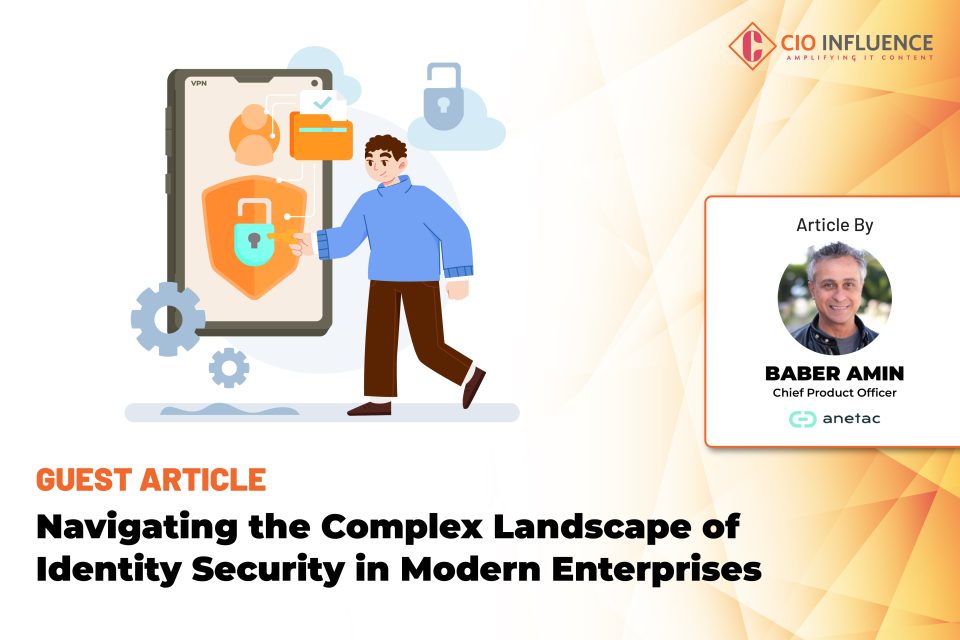In today’s rapidly evolving digital landscape, enterprises face an increasingly complex set of challenges when it comes to identity security. In the age of digital transformation with cloud computing, and remote work being the norm, the traditional perimeter-based security model is no longer sufficient. Instead, identity has become the new perimeter, and securing it is crucial for protecting sensitive data and ensuring business continuity. As CIOs, it is paramount to understand and address this evolving landscape of Identity Security Posture Management (ISPM).
Also Read: An Evolutionary Approach to Artificial Intelligence
While a lot of attention is given to securing human user accounts, a more pressing issue in identity security is the management of non-human identities and service accounts. These often-overlooked entities play a critical role in modern IT infrastructures, and they pose significant risks if not properly managed. Anetac’s 2024 Identity Security Posture Management (ISPM) Survey Report reveals a startling statistic: a staggering 76% of organizations misuse service accounts, exposing themselves to critical identity security vulnerabilities.
This alarming statistic underscores the urgent need for better identity security practices, especially concerning non-human identities. Service accounts, used to execute automated tasks and facilitate communication between different systems and applications, frequently possess elevated privileges and access to sensitive data. When mismanaged, they become prime targets for cybercriminals seeking to exploit vulnerabilities and gain unauthorized access to critical systems.
The challenges associated with managing service accounts are:
Visibility
Many organizations struggle to maintain an accurate inventory of their service accounts, leading to what’s commonly referred to as “identity sprawl.” This lack of continuous discovery and visibility makes it difficult to enforce proper security controls and increases the risk of unauthorized access.
Lifecycle management
Service accounts are often created for specific projects and needs but are rarely decommissioned when no longer required. This results in a proliferation of dormant accounts with large standing privileges that can be exploited by malicious actors.
Access governance
Many organizations struggle to implement and maintain the principle of least privilege when it comes to service accounts.
These challenges are further compounded by the increasing complexity of modern IT environments. With the adoption of hybrid and multi-cloud infrastructures, organizations must manage identities across a diverse range of platforms and services. This heterogeneity makes it difficult to maintain consistent security policies and practices across the entire environment.
Moreover, the rapid pace of technological change means that new types of non-human identities are constantly emerging. From containers and serverless functions to IoT devices, each new technology brings its own set of identity-related challenges. CIOs must be prepared to adapt their identity security strategies to accommodate these evolving technologies. According to TechTarget’s Enterprise Security Group (ESG) estimates, non-human identities will increase by 24% in the next year alone.
Another critical aspect of identity security that often goes overlooked is the human factor. While much attention is given to technical controls and automated solutions, it’s important to remember that human error and negligence remain significant contributors to security incidents. Organizations have seen employees go as far as using service accounts to order pizza and automate personal non-work related tasks.
This underscores the need for comprehensive security awareness training programs that address the unique challenges associated with managing non-human identities. Employees at all levels of the organization, from IT administrators to developers and business users, need to understand the importance of proper service account management and the potential consequences of misuse.
Also Read: Companies See Investment in Cybersecurity Protection Software as Leading Defense Against Deepfake Attacks
To address these challenges, CIOs need to adopt a holistic approach to identity security that encompasses both human and non-human identities. This approach should be built on the following key pillars:
- Continuous discovery: Implement tools and processes to maintain an accurate, real-time inventory of all identities, including service accounts, across your entire IT environment.
- Lifecycle management: Continuously monitor,review, and decommission unnecessary service accounts to prevent identity sprawl and reduce the risk of unauthorized access.
- Least privilege access: Enforce the principle of least privilege for all identities, ensuring that each account has only the permissions necessary to perform its intended functions.
- Continuous monitoring and analytics: Implement robust discovery and analytics capabilities to detect anomalous behavior and security threats associated with service accounts and other non-human identities to identify gaps and areas of improvement.
- Automation and orchestration: Leverage automation to streamline identity management processes, reduce human error, and ensure consistent policy enforcement across diverse environments.
- Security awareness and training: Develop comprehensive training programs that educate employees about the importance of proper identity management and the specific risks associated with service accounts.
Navigating the complex landscape of Identity Security, it is clear that a proactive, holistic approach is essential for modern enterprises. By investing in robust identity security practices, CIOs can significantly reduce their organization’s risk exposure and build a more resilient security posture. It’s important to remember that identity security is not a one-time project but an ongoing process that requires continuous attention and adaptation.
As leaders in the digital transformation journey of their organizations, CIOs are at the forefront to safeguard their organizations against ever-evolving Identity Security threats.
[To share your insights with us as part of editorial or sponsored content, please write to psen@itechseries.com]


